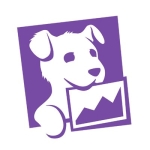I use the solution for threat hunting. We've installed it on a lot of devices. I look for specific version numbers or threats within the environment.
The product has given us more insight into potential avenues for attack paths.
I like that the solution shows me recent log-ins for certain servers and devices. It's pretty helpful to track down activities and identify or tie them to specific users.
The product must improve its UI. Looking at multiple devices for the same issue or vulnerability is very cumbersome.
The solution should provide built-in features related to trending and graphing over time. If it’s already present, we haven’t found it. It doesn't seem intuitive to find it quite as easily as some other tools with ready-to-go dashboards.
I have been using the solution for two years.
The tool’s stability seems to be pretty good. I'm sure Microsoft takes care of its backend structure since it is a cloud solution.
Scalability, in general, is fine. We can deploy it on as many devices as we want. However, getting meaningful results and data out of that is not easy, especially when some of the things you're looking for might be across your entire enterprise. For example, if we want to know whether a DLL version is installed on any device, trying to get that information by going one by one through the devices is ridiculously cumbersome.
We used LogRhythm for a little bit. We switched to Microsoft Defender for Cloud because we wanted to do a cloud homogenization. We wanted to bring things away from on-premise and into the cloud because we had cloud assets. It just made more sense to have a cloud solution to manage the tools instead of pulling back into our network and opening the tunnel paths to our on-premise LogRhythm server.
The solution is deployed on-premise as well as on the public cloud. Our cloud providers are Azure and AWS. We also have some GCP assets. We have around 20,000 total devices. They don’t always correspond to an end user. Of those, maybe 12,000 to 13,000 are enrolled in Microsoft Defender for Cloud.
Other devices we have are either outdated Linux or outdated Windows. We’re trying to migrate all the ones we can, and then some of them will be those narrow use-case devices where it wouldn't really make sense or be feasible for them to have a definitive cloud. They're limited processing power devices, like iPads and tablets.
The product certainly requires maintenance.
Just based on costs, I do not see an ROI. However, evaluating a return on investment for something that provides insight into risks and vulnerabilities is not my area of expertise. In my opinion, a lot of it can't be quantified.
We have the full E5 license. The tool is pretty expensive.
We evaluated Splunk. Splunk's really expensive. It would also have been an on-premise solution. We needed a cloud solution.
We use Microsoft Defender for Cloud to support Azure natively. The solution’s ability to protect hybrid and multi-cloud environments is pretty important for us. Just as much as anyone else.
The unified portal for managing and providing visibility across hybrid and multi-cloud environments could be better with some of the ways things are displayed. Overall, it’s all right.
We have had the solution since we started cloud. I cannot provide a comparison for it. I don't pay too much attention to Microsoft Secure Score. However, I’m sure the product has affected it. We use the product to track down vulnerabilities and missing patches. When those get passed, I'm sure that it changes the score.
We have integrated Microsoft 365 and Microsoft Defender for Cloud with Microsoft Sentinel. However, I don't deal with it specifically. The tool’s UI could be better. As it is right now, we can only view information from one device at a time. It is extremely limiting.
The solution is pretty good at keeping our multi-cloud infrastructure and cloud resources secure. We use AWS, and we also have some Windows devices in AWS. We have Microsoft Defender on those.
Microsoft Defender for Cloud has helped save some of our SOC time. The reporting features, being able to search multiple devices for a specific vulnerability or incident and tying it back, are very difficult to do in the UI. There's some scripting that can be done, but that doesn't make it easier for a lot of people.
We have set up alerts in the tool. That, combined with other industry scanners like Tenable Nessus, Invicti, and a couple of others that we utilize in our environment, sends updates and alerts to us so that we can quickly respond to issues. We were not measuring TTR. So, the effect on the overall TTR is negligible.
It is hard to quantify whether the product has saved us money. We haven't seen any attacks from ransomware gangs. Possibly, those are being prevented, and we don't get alerts for some of these attacks. It has not saved us money. It's expensive. However, it is not expensive compared to all our computers being locked up, and someone demanded two million dollars.
People evaluating the product must look at other options to determine what works best for their environment and organization. It may not necessarily be the best option, but it might be. It certainly works well in a wholly Microsoft Windows environment, especially with other Microsoft software as a primary. If they’re using OfficeSuite, like Microsoft Word and Microsoft Excel, it works well. If they have other things within their environment, they must do their homework and research to see if it works.
Overall, I rate the tool a seven out of ten.

















